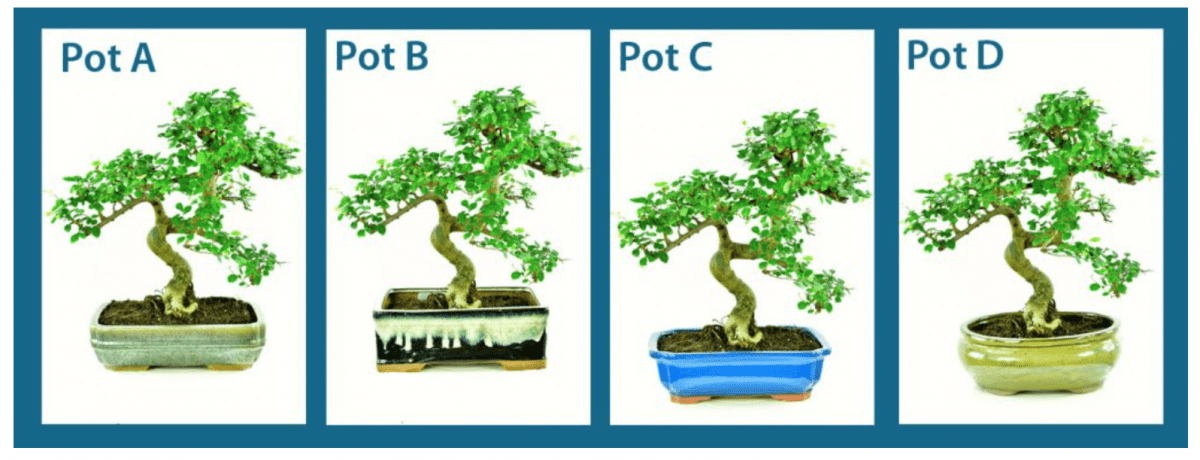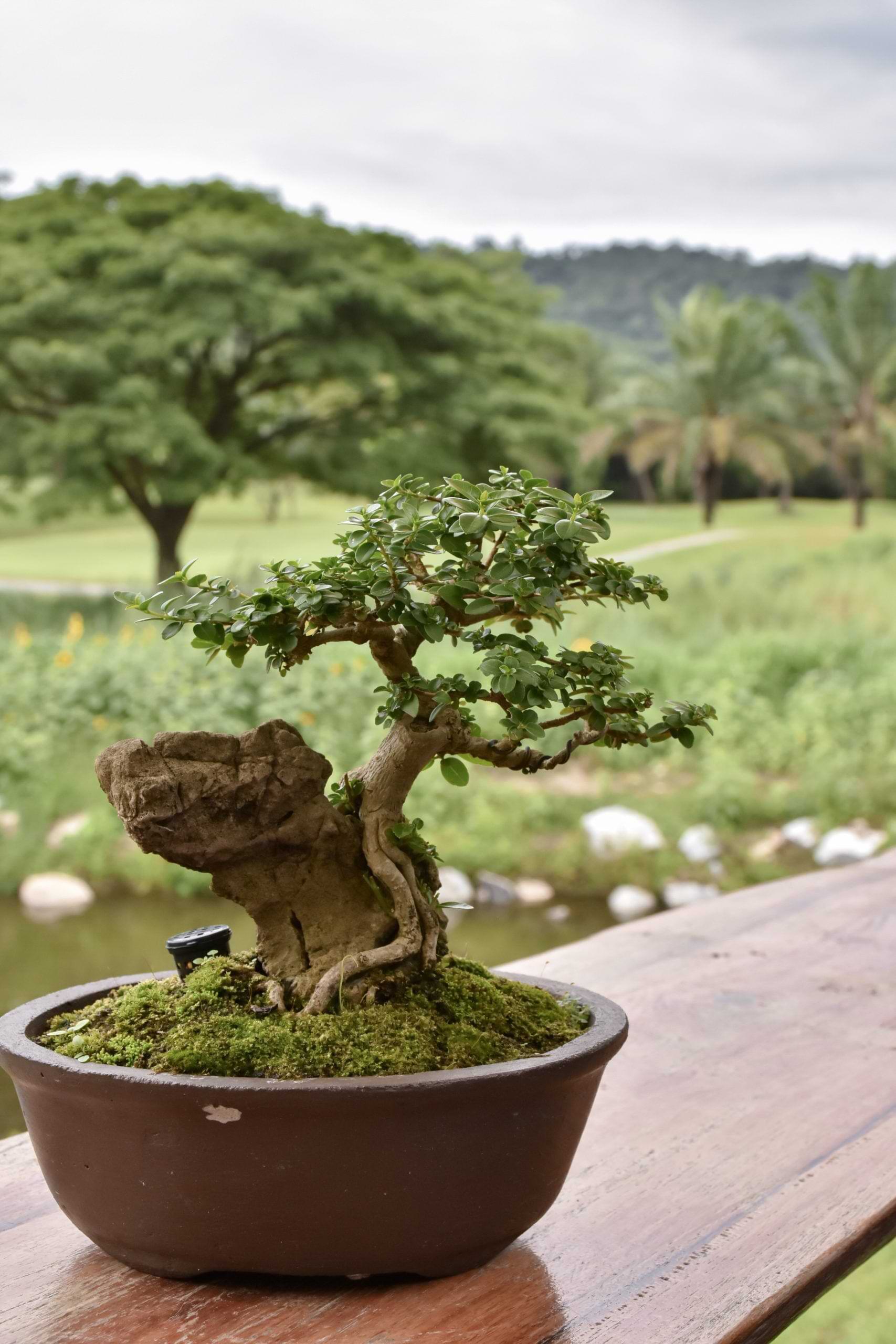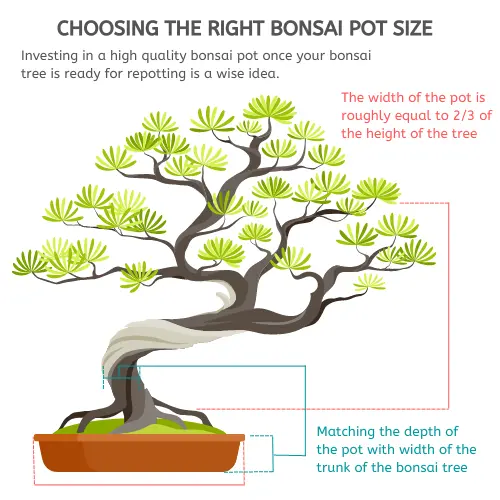When it comes to bonsai trees, choosing the right pot size is a critical decision. As a bonsai enthusiast myself, I understand the importance of finding the perfect balance between aesthetics and practicality. In this article, I will guide you through the process of selecting the ideal pot size for your bonsai tree.
We will explore the factors that should be taken into consideration, such as the tree’s size and stage of development, the type of soil you use, and the overall design you are aiming for.
By the end of this article, you will have a clear understanding of how to choose the right pot size for your bonsai tree, ensuring its growth and beauty for years to come. So, let’s dive into the fascinating world of bonsai pot selection.
Tree Size and Age
The size and age of a bonsai tree play a crucial role in determining the right pot size. Younger and smaller trees will require smaller pots, as their roots are not fully developed and they do not require as much space to grow. On the other hand, larger and older trees will need larger pots to accommodate their extensive root systems.
Root Ball Size
The size of the root ball is another significant factor to consider when choosing a pot size. The root ball should fit comfortably inside the pot without being cramped or overly spacious. A pot that is too small can restrict root growth, while a pot that is too large can lead to waterlogged soil and poor drainage.

Species
Different species of bonsai trees have varying root growth patterns and requirements. Some species have more compact root systems and can thrive in smaller pots, while others have more extensive roots and require larger pots. It’s important to research the specific species of your bonsai tree to determine its pot size needs.
Desired Outcome
The desired outcome for your bonsai tree also plays a role in pot size selection. If you want your tree to have a more compact appearance, a smaller pot can help achieve this. Conversely, if you want your bonsai tree to have a more mature and robust look, a larger pot can be chosen to accommodate its growth potential.

Aesthetics
The aesthetic aspect should not be overlooked when choosing the right pot size for your bonsai tree. The pot should complement the overall appearance of the tree and enhance its beauty. It’s important to consider the size, shape, color, and material of the pot to create a visually appealing and harmonious composition.
Drainage
Proper drainage is crucial for the health and well-being of bonsai trees. The pot size should allow for adequate drainage to prevent the roots from becoming waterlogged. Too much moisture in the soil can lead to root rot and other fungal diseases. Selecting a pot with drainage holes or incorporating a layer of gravel at the bottom can help ensure proper drainage.

Growing Environment
The specific growing environment of your bonsai tree should be taken into account when choosing a pot size. Consider factors such as humidity levels, temperature fluctuations, and sunlight exposure. These environmental factors can influence the root growth and overall health of your bonsai tree. Selecting a pot size that promotes optimal growth in your specific environment is essential.
Future Growth Potential
Anticipating the future growth potential of your bonsai tree is important when choosing a pot size. While it’s tempting to select a smaller pot to create an instantly compact appearance, it’s essential to allow room for the tree to grow and mature. Plan for the long-term health and development of your bonsai by choosing a pot size that can accommodate its future growth.

Maintenance
Consider the maintenance aspect when selecting the right pot size for your bonsai tree. A pot that is too large can make maintenance tasks such as repotting and root pruning more challenging. On the other hand, a pot that is too small can require more frequent watering and root maintenance. Choose a pot size that strikes a balance between ease of maintenance and the tree’s overall health.
Practicality
Lastly, practicality should be considered when choosing a pot size for your bonsai tree. Consider the space you have available to display and care for your bonsai. If you have limited space, a smaller pot size may be more practical. If space is not an issue, you can opt for a larger pot to showcase your bonsai tree in all its glory.
Now that we’ve explored the various factors to consider, let’s delve into specific pot size guidelines for different types of bonsai trees.

Do You Need Special Soil for Bonsai
Creativity in writing is becoming a scarcity.
Between the constant temptation to dance for the algorithm and the staggering advance of artificial intelligence, our world is spiraling into what I believe to be a creative crisis.
For us to remain an emotionally-aware race, while at the same time pushing humanity forward, we must cultivate and champion creativity both in ourselves and in the generations to come and write as we feel.
This is why I’m dedicating the next decade of my life to exploring the subject of creativity as both an artist and teacher.
I hope you enjoy my content
Best
James
My Bonsai Journey

